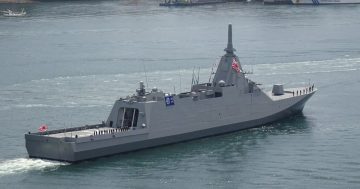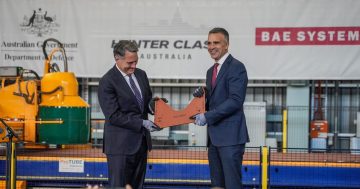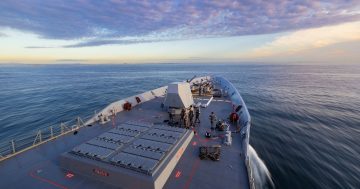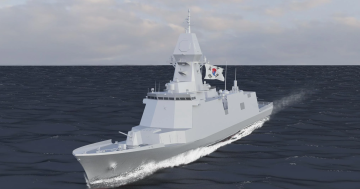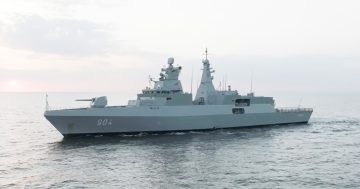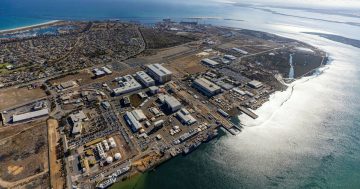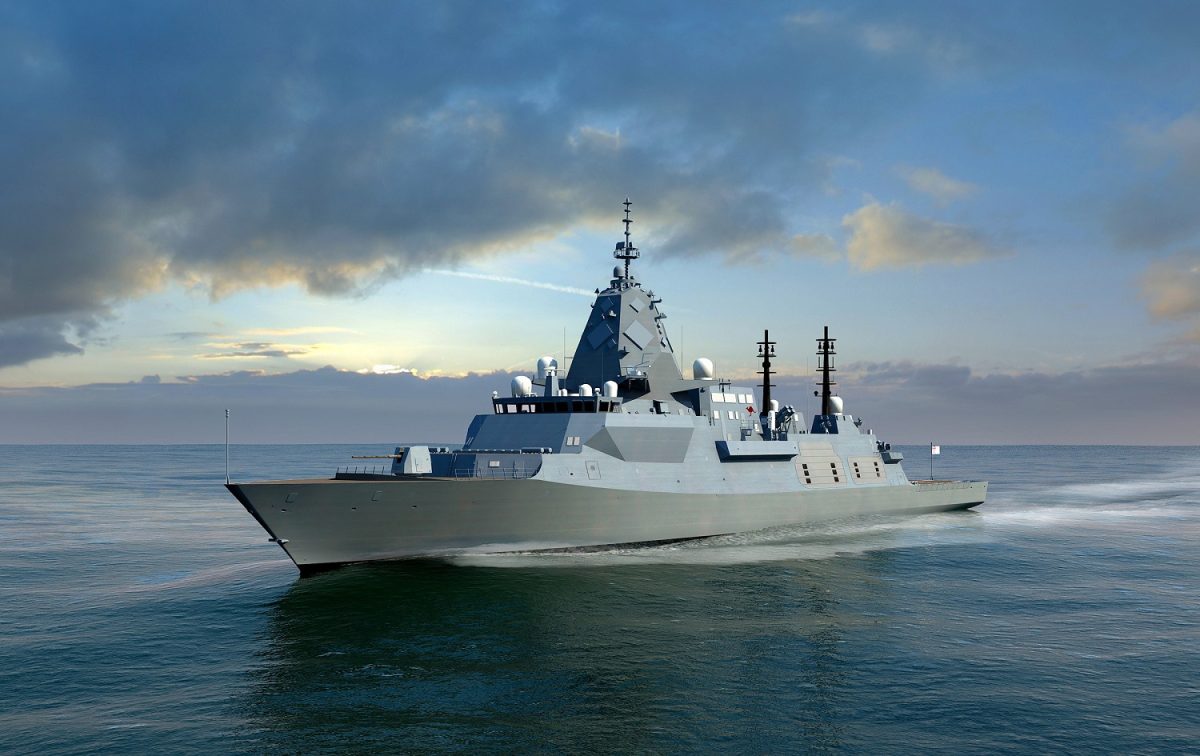
The Hunter class is based on BAE Systems’ Global Combat Ship design, but features Australian-designed radar arrays and a US combat and weapons system. Photo: BAE Systems via ADF.
The Australian National Audit Office (ANAO) has released a scathing report into the Royal Australian Navy’s Project SEA 5000 Hunter class frigate shipbuilding program.
Despite no metal having been cut for any of the nine planned vessels yet, the report states the project is already 16 months late and more than $400 million over budget due to the ongoing immaturity of the design.
The nine planned Hunter class frigates are based on BAE Systems’ Global Combat Ship (GCS) design. The GCS was selected for Project SEA 5000 in 2018 after a competitive evaluation process, ahead of offerings of a modified F100 design from Spain’s Navantia, and Italy’s Fincantieri FREMM.
The Hunter class is being built by an Australian workforce using Australian steel at Adelaide’s Osborne shipyard by BAE Systems Maritime Australia.
The Hunter class will replace the RAN’s ANZAC class frigates in service. The first of the ANZACs entered service in 1996 as the RAN’s primary anti-submarine major surface combatant, and all but two have received two major upgrades since then which have added advanced radar arrays from Canberra’s CEA Technologies to improve their anti-ship and air defence capabilities.
The ANZACs were joined in service from 2017 by three Hobart class destroyers – based on the F100 design and also built by ASC Shipbuilding in conjunction with Raytheon Australia and Navantia – from 2016, although these vessels have been optimised for the air defence mission and only have a secondary anti-submarine role.
The attribution of the schedule slip and cost overrun due to the Hunter class’s design immaturity goes against government statements at the time which said the GCS was selected as the preferred design due to its commonality with eight BAE Systems Type 26 vessels being built in Scotland for the UK’s Royal Navy (RN). The RN’s vessels were widely touted as the lead ships of a larger class which would reduce risk to Australia’s program, despite the RN using different primary sensors, combat systems and weapons.
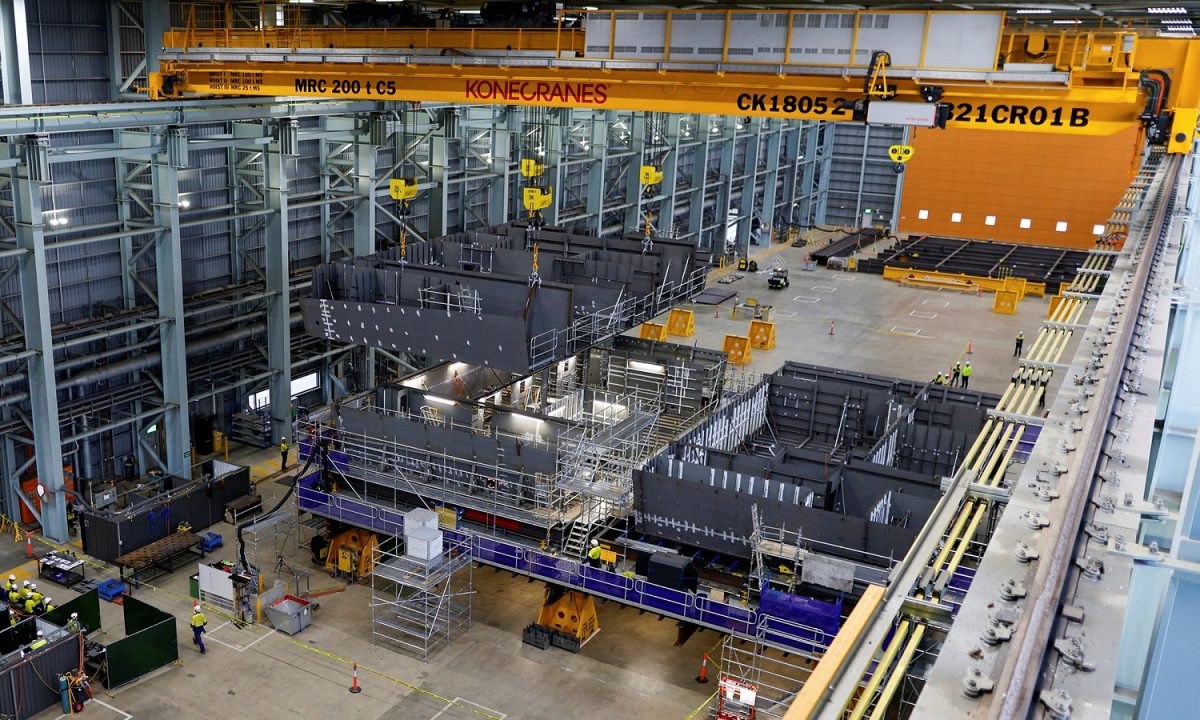
BAE Systems’ ASC Shipbuilding has manufactured a number of prototype hull sections, but is yet to cut steel on the first Hunter class frigate. Photo: ADF.
The ANAO found that, despite the competitive evaluation process, Defence failed to retain complete records of how the GCS was selected ahead of the two competing designs and other key programmatic decisions, especially meeting records prior to the decision which had reportedly shown a preference for the two competing designs.
“The meeting records indicated that the Italian FREMM and Modified F-100 were considered the two most viable designs, and that either the Type 26 or the French [NAVAL Group] FREMM should be progressed as a third option,” it noted.
A December 2017 tender compliance evaluation reportedly found that, while the F100 and FREMM met the all-important requirements to meet the scheduled start of prototyping and construction at Osborne with a “high risk” assessment, the GCS was assessed as being at “extreme risk”.
The reports added it did not regard the tender process as a rigorous one. “Defence did not conduct an effective limited tender process for the ship design,” it stated. “The value for money of the three competing designs was not assessed by officials, as the Tender Evaluation Plan (TEP) proposed that government would do so.”
Since the GCS selection, analysts have noted that while the GCS design likely offered greater anti-submarine warfare (ASW) capabilities, a solution based on the F100 would likely have been much cheaper and able to start production sooner due to the Osborne shipyard already having a workforce in place with previous design familiarity from the similar three-ship Hobart class build.
“Defence’s procurement process and related advisory processes lacked a value for money focus, and key records, including the rationale for the procurement approach, were not retained,” the report noted.
“Contract expenditure to date has not been effective in delivering on project milestones,” it added, noting a contract management plan wasn’t actually established until 44 months after the contract was executed in December 2018.
On the schedule, the commissioning of the first vessel has slipped from early 2031 to mid-2032. Because of this, the scheduled transition from the ANZAC class to the Hunter class has been affected. But the ANAO report also noted BAE Systems had advised Defence it would recover the delays and deliver the final vessel on schedule in 2044.
The ANAO report came out just weeks after the release of the public version of the Defence Strategic Review (DSR) which recommended a snap six-month review be undertaken into the RAN’s major surface ship acquisition plans. Although it is unclear whether the DSR authors had any early insight into the ANAO’s findings, or vice-versa.
Original Article published by Andrew McLaughlin on Riotact.


